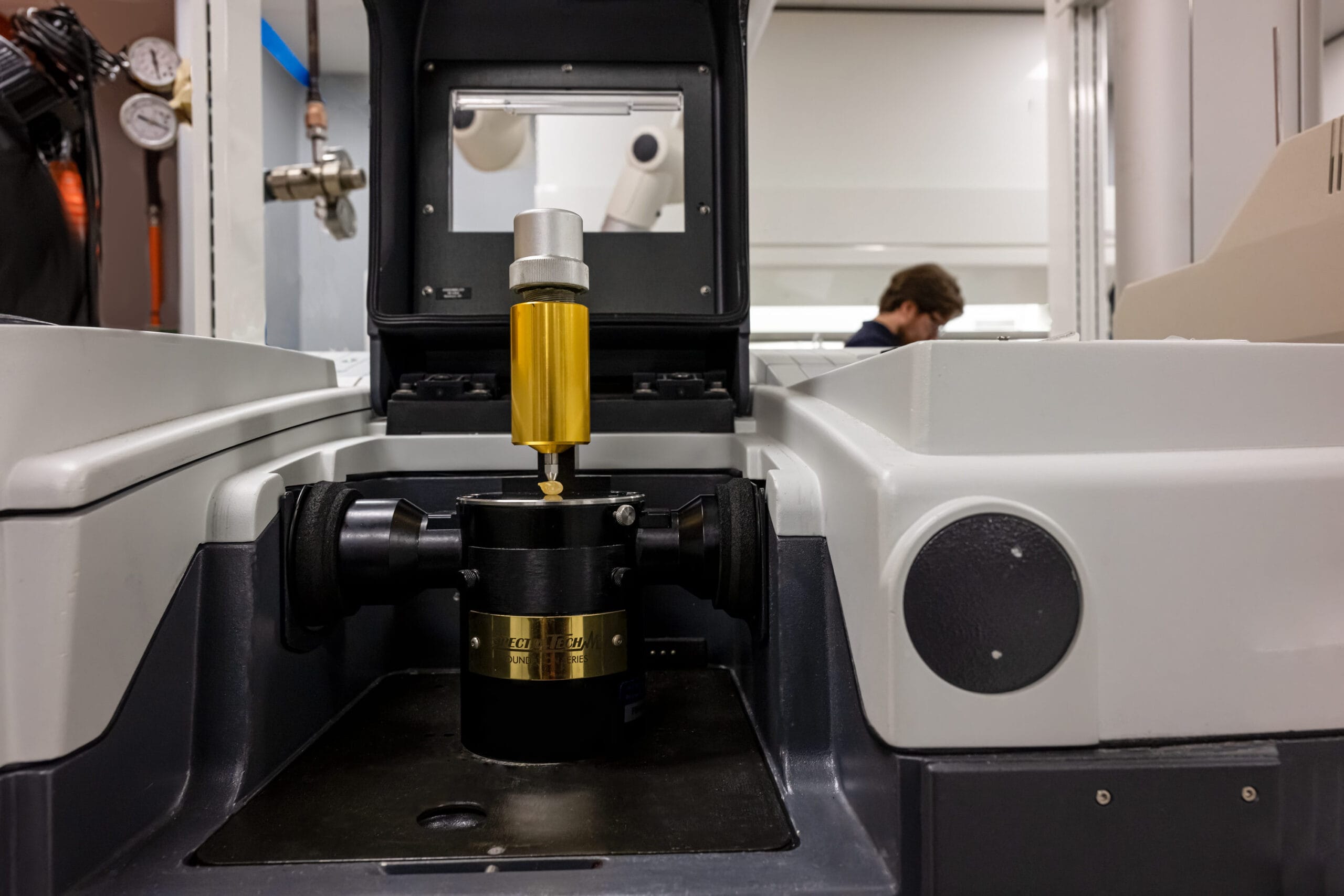
Deformulation
Molecular weight is measured directly by GPC or indirectly by solution viscosity or melt flow rate.
While gel permeation chromatography (GPC) or size exclusion chromatography (SEC) is the method most commonly utilized for a direct measurement of a polymer’s molecular weight distribution, we have a variety of analytical options which can probe differences in molecular weight.
The molecular weight is most easily described as the size of the molecules that comprise a polymer. Inherently, polymers contain chains of multiple lengths, resulting in a molecular weight distribution. The properties of the polymer during processing as well as the performance of the final part are influenced by the polymer’s molecular weight distribution. For example, lower molecular weight polymers flow more easily to fill cavities during injection molding, while a higher molecular weight version of the same polymer can offer improved mechanical properties which can be application critical. Additionally, the molecular weight of a polymer will change as the polymer is processed by molding or extrusion, during sterilization, and during storage and use by the consumer. For some applications, such as bioresorbable stents, the initial molecular weight also influences the duration of intended use.
Approaches
The solubility of a polymer material can influence selection of an analytical method for measuring molecular weight. GPC and dilute solution viscosity methods require full solubility, while melt flow rate (MFR) does not. In case of evaluation against a specification, it is essential to match the test method to the specification.
We regularly use the following analytical methods to either directly measure the molecular weight of a polymer or indirectly compare between samples:
- Gel Permeation Chromatography/Size Exclusion Chromatography (GPC/SEC)
- Common organic solvents like chloroform or tetrahydrofuran (THF)
- Buffered aqueous solutions
- High temperature trichlorobenzene (TCB) for olefins including polyethylene (PE) and polypropylene (PP)
- High temperature 1-chloronapthalene for poly(phenylene sulfide) (PPS)
- Hexafluoroisopropanol (HFIP) for polyesters and Nylons
- Inherent and Intrinsic Solution Viscosity (IV)
- Common organic solvents
- Concentrated acids like sulfuric acid or formic acid for Nylons
- 60:40 phenol/tetrachloroethane (TCE) for PET
- Hexafluoroisopropanol (HFIP) polyesters and Nylons
- Melt Rheology
- Melt Flow Rate (MFR)

The method that directly evaluates the molecular weight distribution of a polymer is gel permeation chromatography (GPC), also known as size exclusion chromatography (SEC). GPC/SEC provides either a relative or absolute measurement of the molecular weight distribution of the polymer. Relative molecular weight values are measured compared to narrow molecular weight standards using refractive index (RI) detection. Absolute molecular weight distribution is measured using multi-angle light scattering (MALS) detection and a refractive index increment (dn/dc) which can be measured offline, determined from an RI response, or taken from the literature. GPC can also be used for determining the low molecular weight composition for regulatory purposes. This is typically reported as the percentages below 500 and 1000 Daltons.
A broadly useful technique frequently used for specification testing or for comparing molecular weights between samples is dilute solution viscosity or inherent/intrinsic viscosity (IV). Dilute solution viscosity does not provide the molecular weight distribution information that may be required in initial research investigations or in full characterization of a material. However, dilute solution viscosity is a cost effective approach for lot release testing during production and is frequently used for PLA, PET, and Nylons.
Molecular weight is also monitored by Melt Flow Rate (MFR) which measures the mass of polymer that flows through a capillary of specified diameter during a set period of time. While this is not a direct measurement of molecular weight, a higher MFR value can indicate a shift to a lower molecular weight relative to other lots of the same material. This measurement is common to olefins like polypropylene and polyethylene and is commonly reported on technical data sheets and used for lot release testing for QC purposes
Sample Considerations
Sample submission will depend on the technique used and ranges from a minimum of about 20 mg of polymer (minus fillers) for GPC to about 100 g for MFR.
Contact an expert to determine the proper technique and associated sample considerations.
Experience
Products we’ve tested:
- Medical devices including bioresorbable and biodurable implants
- Cellulose from recycled textiles
- Chitosan
- Fluoropolymers
- Polysaccharides
- Vicryl mesh
- Polypeptides
- Various resins such as polycarbonate, Nylons, and PET
- Nylon copolymers
- Ultrahigh molecular weight polyethylene (UHMWPE) for medical products
- Nitrocellulose used for ammunition and explosives applications
- Polyphenylene sulfide (PPS)
